Damage of Hygrothermally Conditioned Carbon Epoxy Composites under High-Velocity Impact
Abstract
1. Introduction
2. Materials and Methods
2.1. Tested Materials
2.2. Hygrothermal Conditioning
2.3. Impact Test
2.4. Damage Detection
3. Results and Discussion
3.1. Moisture Absorption Behavior
3.2. Energy Absorption
3.3. Impact Damage Characteristics
3.3.1. Morphological Features
3.3.2. Measurement of Delamination Area
3.3.3. Microscopic Damage Characteristics
4. Conclusions
- After the hygrothermal conditioning, the interfacial performance of the CFRP laminates decreased.
- The saturated samples have better energy absorption. The hygrothermal conditions also offer higher resistance to damage initiation due to the enhancement of the ductility in the resin.
- With the micro-imaging of the fracture, the shear-induced delamination and the debonding of the composite plies were observed, along with some tensile fractures of fibers. Those patterns suggest that the failure mode in the saturated samples was a shear-induced delamination.
- With the increase in impact velocity, the energy absorption and the projected damage area in the CFRP laminates increases. Once the velocity increases to a certain level, the growth rate of the damaged area was limited in the hygrothermally conditioned ones.
- The energy absorption was also affected by the projectile geometry for both the “dry” and “wet” samples. Under the presented velocity range, E(Flat) > E(Sphere) > E(Cone) when the projectile could perforate the laminate.
- Due to the alteration of the failure mechanism, the damaged regions of the laminates became elliptically shaped after hygrothermal conditioning, and rhomboidally shaped for the unconditioned specimens.
Author Contributions
Funding
Acknowledgments
Conflicts of Interest
References
- Flaga, K. Advances in materials applied in civil engineering. J. Mater. Process. Technol. 2000, 106, 173–183. [Google Scholar] [CrossRef]
- Zu, L.; Xu, H.; Wang, H.; Zhang, B.; Zi, B. Design and analysis of filament-wound composite pressure vessels based on non-geodesic winding. Compos. Struct. 2019, 207, 41–52. [Google Scholar] [CrossRef]
- Selzer, R. Mechanical properties and failure behaviour of carbon fibre-reinforced polymer composites under the influence of moisture. Compos. Part A Appl. Sci. Manuf. 1997, 28, 595–604. [Google Scholar] [CrossRef]
- Meziere, Y.; Michel, L.; Carronnier, D. Mixed-Mode delamination failure criteria in carbon fibre/composite under quasi-static and cyclic loading. Eur. Struct. Integr. Soc. 2000, 27, 97–110. [Google Scholar]
- Xu, H.; Zu, L.; Zhang, B.; You, H.; Li, D.; Wang, H.; Zi, B. Static and dynamic bending behaviors of carbon fiber reinforced composite cantilever cylinders. Compos. Struct. 2018, 201, 893–901. [Google Scholar] [CrossRef]
- Woldesenbet, E.; Gupta, N.; Vinson, J.R. Determination of moisture effects on impact properties of composite materials. J. Mater. Sci. 2002, 37, 2693–2698. [Google Scholar] [CrossRef]
- Tual, N.; Carrere, N.; Davies, P.; Bonnemains, T.; Lolive, E. Characterization of sea water ageing effects on mechanical properties of carbon/epoxy composites for tidal turbine blades. Compos. Part A Appl. Sci. Manuf. 2015, 78, 380–389. [Google Scholar] [CrossRef]
- Meng, M.; Rizvi, M.J.; Grove, S.M.; Le, H.R. Effects of hygrothermal stress on the failure of CFRP composites. Compos. Struct. 2015, 133, 1024–1035. [Google Scholar] [CrossRef]
- Liu, S.; Cheng, X.; Zhang, Q.; Zhang, J.; Bao, J.; Guo, X. An investigation of hygrothermal effects on adhesive materials and double lap shear joints of CFRP composite laminates. Compos. Part B Eng. 2016, 91, 431–440. [Google Scholar] [CrossRef]
- Aoki, Y.; Yamada, K.; Ishikawa, T. Effect of hygrothermal condition on compression after impact strength of CFRP laminates. Compos. Sci. Technol. 2008, 68, 1376–1383. [Google Scholar] [CrossRef]
- Hosur, M.V.; Jain, K.; Chowdhury, F.; Jeelani, S.; Bhat, M.R.; Murthy, C.R.L. Low-velocity impact response of carbon/epoxy laminates subjected to cold-dry and cold-moist conditioning. Compos. Struct. 2007, 79, 300–311. [Google Scholar] [CrossRef]
- Zhong, Y.; Joshi, S.C. Initiation of structural defects in carbon fiber reinforced polymer composites under hygrothermal environments. J. Compos. Mater. 2016, 50, 1085–1097. [Google Scholar] [CrossRef]
- Zhong, Y.; Joshi, S.C. Impact behavior and damage characteristics of hygrothermally conditioned carbon epoxy composite laminates. Mater. Des. 2015, 65, 254–264. [Google Scholar] [CrossRef]
- Zhong, Y.; Joshi, S.C. Improved impact response of hygrothermally conditioned carbon/epoxy woven composites. Sci. Eng. Compos. Mater. 2016, 23, 699–710. [Google Scholar] [CrossRef]
- Zhong, Y.; Joshi, S.C. Impact resistance of hygrothermally conditioned composite laminates with different lay-ups. J. Compos. Mater. 2015, 49, 829–841. [Google Scholar] [CrossRef]
- Liu, L.; Zhao, Z.; Chen, W.; Shuang, C.; Luo, G. An experimental investigation on high velocity impact behavior of hygrothermal aged CFRP composites. Compos. Struct. 2018, 204, 645–657. [Google Scholar] [CrossRef]
- Weimin, G. Experimental Study on the Impact Damage and Fracture Mechanisms of Carbon Fiber Reinforced Polymer Composites under Hygrothermal Environment; Wuhan University of Technology: Wuhan, China, 2017. [Google Scholar]
- Shen, C.H.; Springer, G.S. Moisture Absorption and Desorption of Composite Materials. J. Compos. Mater. 1976, 10, 2–20. [Google Scholar] [CrossRef]
- Chang, T.W.; Wang, C.H.; Tsai, C.L. Advancing Boundary Model for Moisture Diffusion in A Composite Laminate. J. Compos. Mater. 2008, 42, 957–973. [Google Scholar] [CrossRef]
- Johnson, W.; Sengupta, A.K.; Ghosh, S.K. High velocity oblique impact and ricochet mainly of long rod projectiles: An overview. Int. J. Mech. Sci. 1982, 24, 425–436. [Google Scholar] [CrossRef]
- Zhang, A.; Lu, H.; Zhang, D. Effects of voids on residual tensile strength after impact of hygrothermal conditioned CFRP laminates. Compos. Struct. 2013, 95, 322–327. [Google Scholar] [CrossRef]
- López-Puente, J.; Zaera, R.; Navarro, C. Experimental and numerical analysis of normal and oblique ballistic impacts on thin carbon/epoxy woven laminates. Compos. Part A Appl. Sci. Manuf. 2008, 39, 374–387. [Google Scholar] [CrossRef]
- Pasquali, M.; Terra, C.; Gaudenzi, P. Analytical modelling of high-velocity impacts on thin woven fabric composite targets. Compos. Struct. 2015, 131, 951–965. [Google Scholar] [CrossRef]
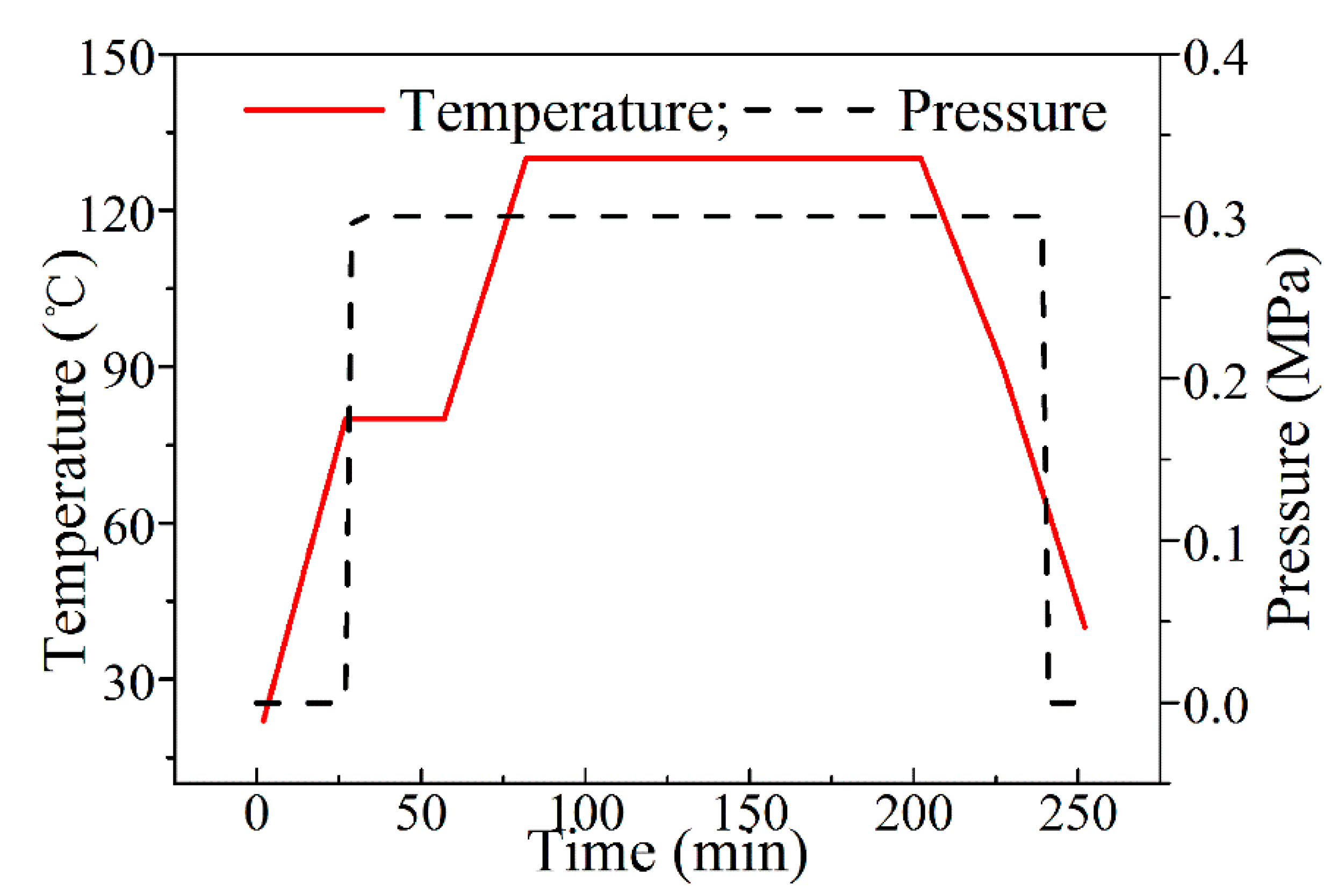
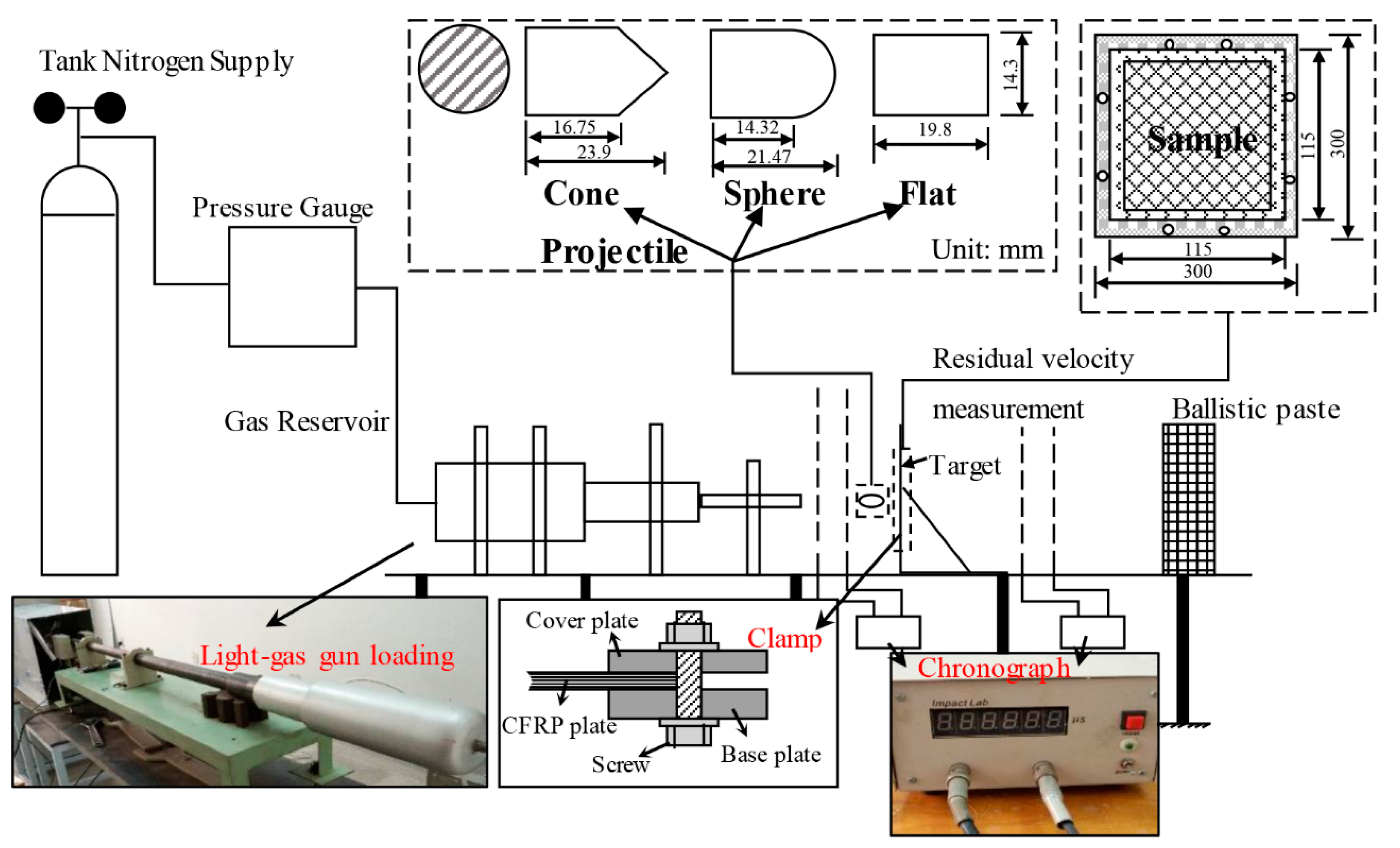

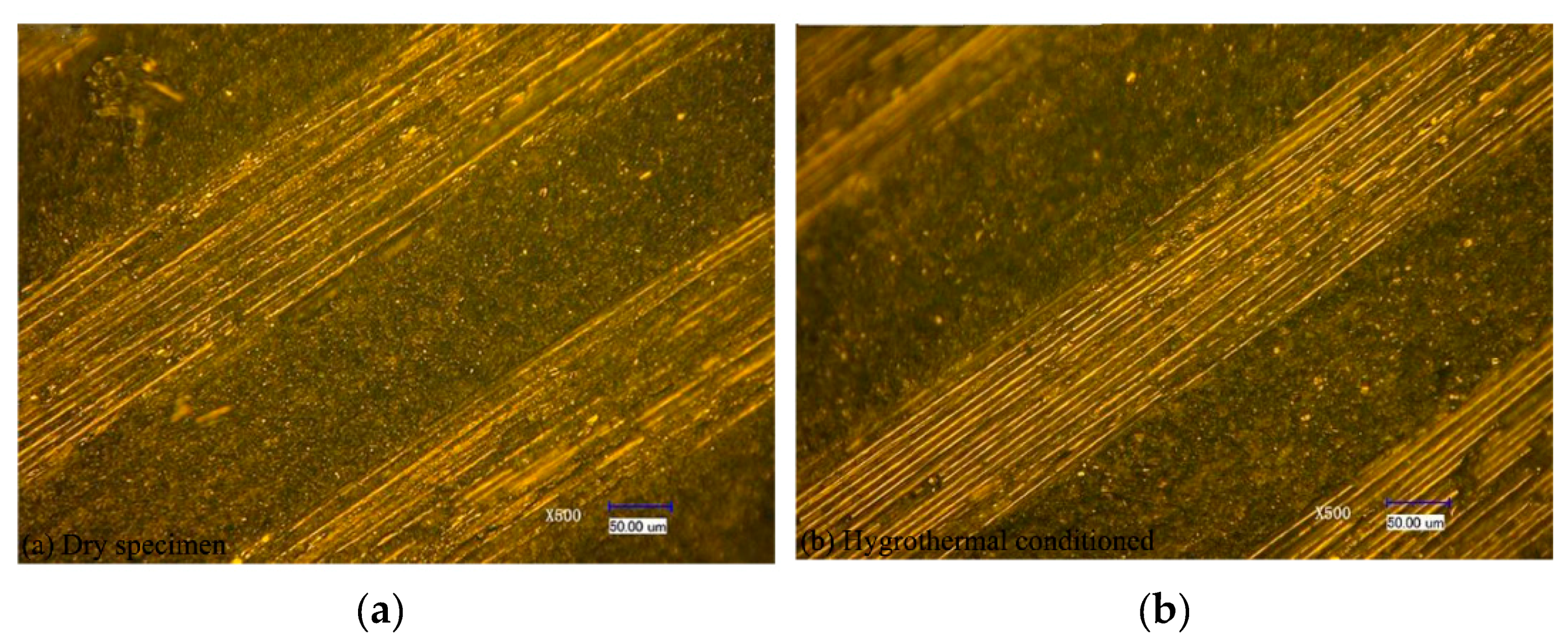
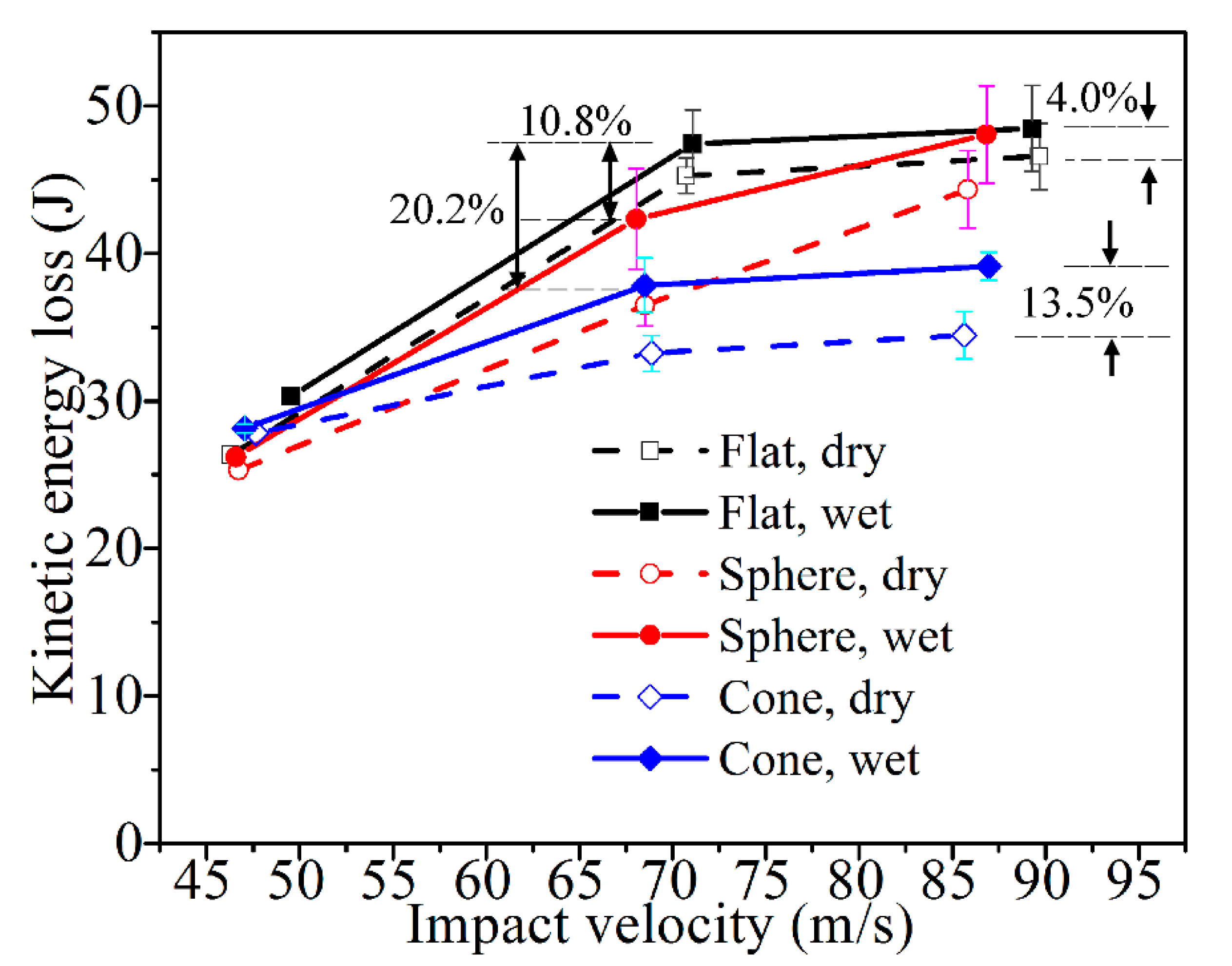
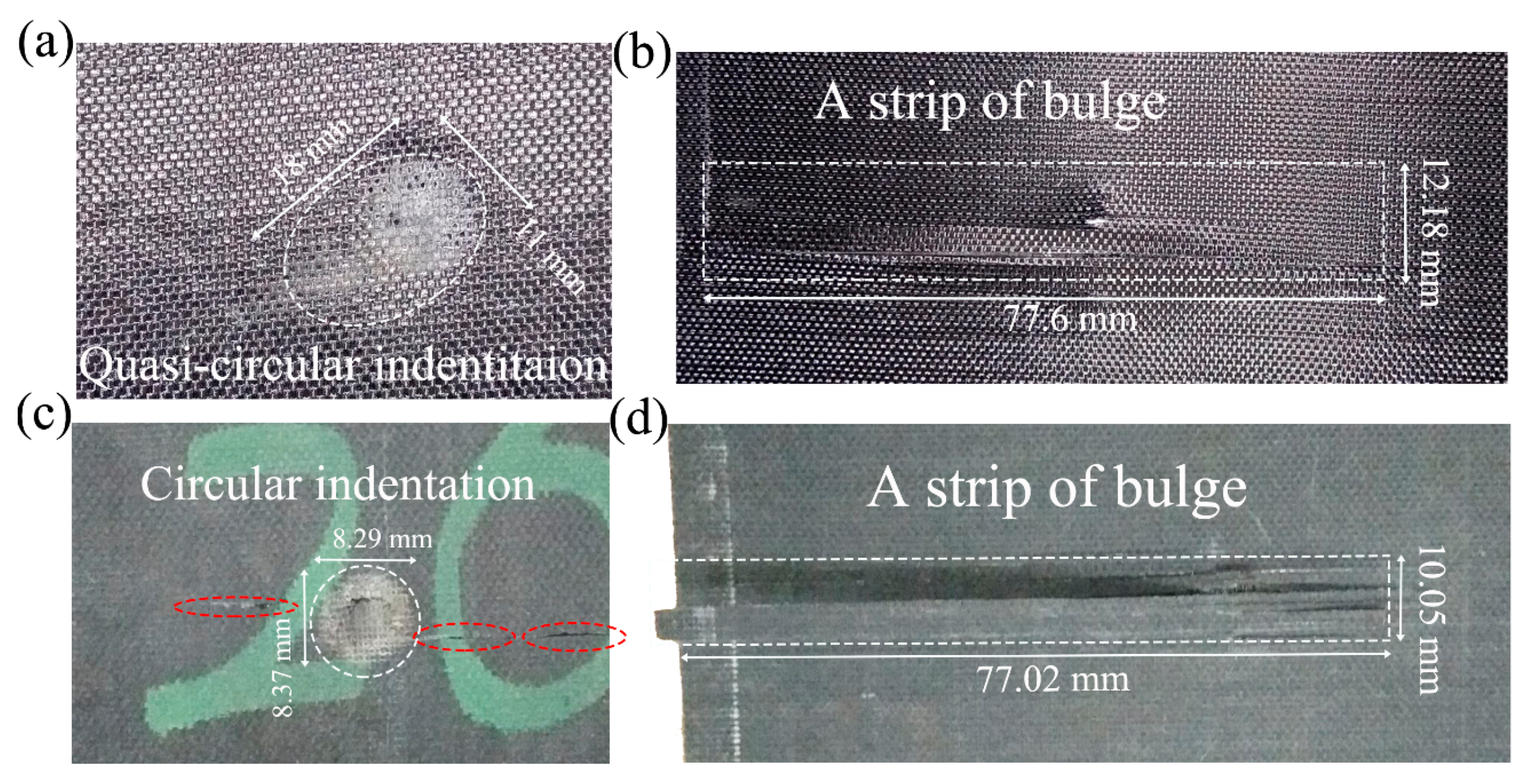
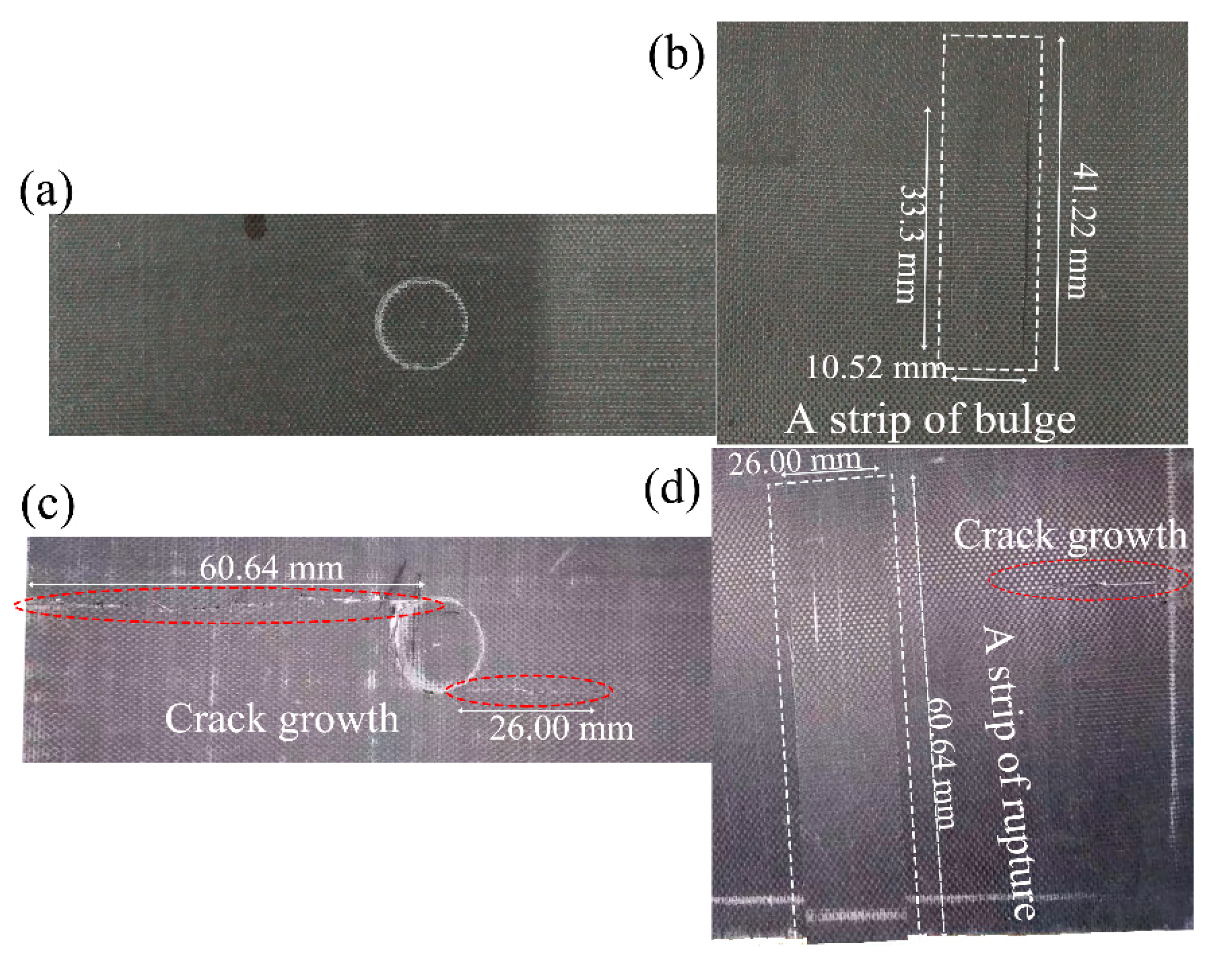
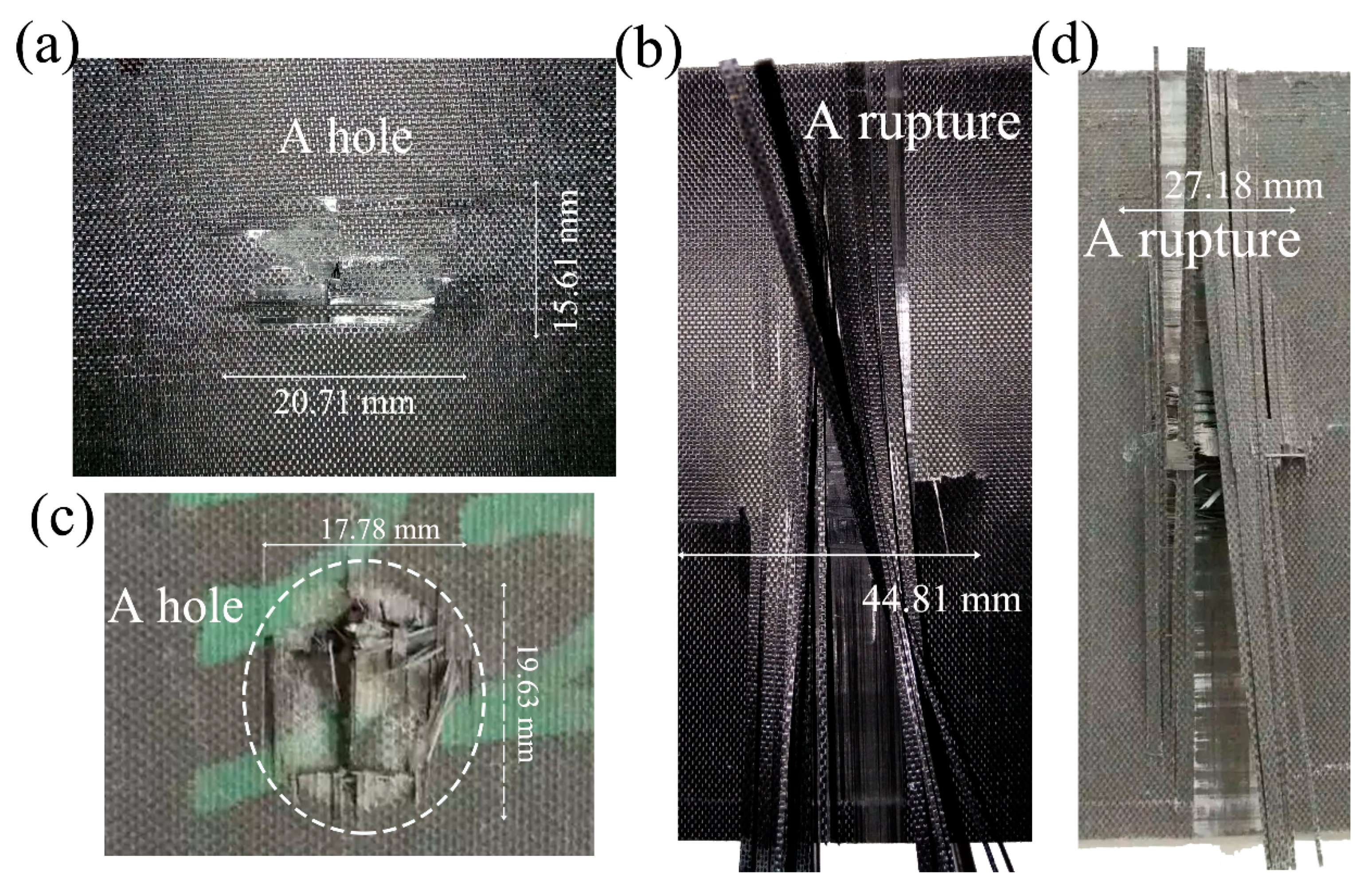
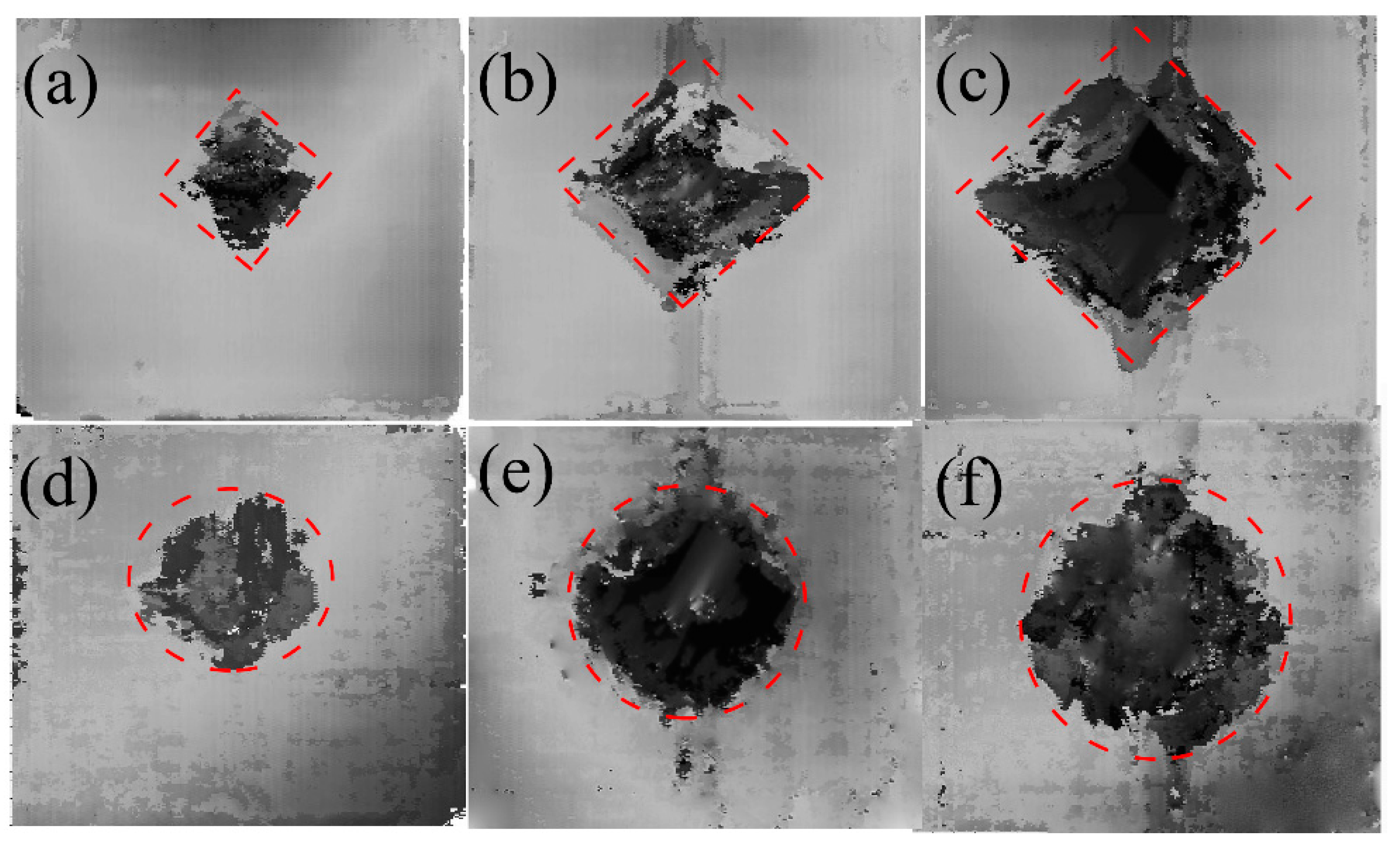
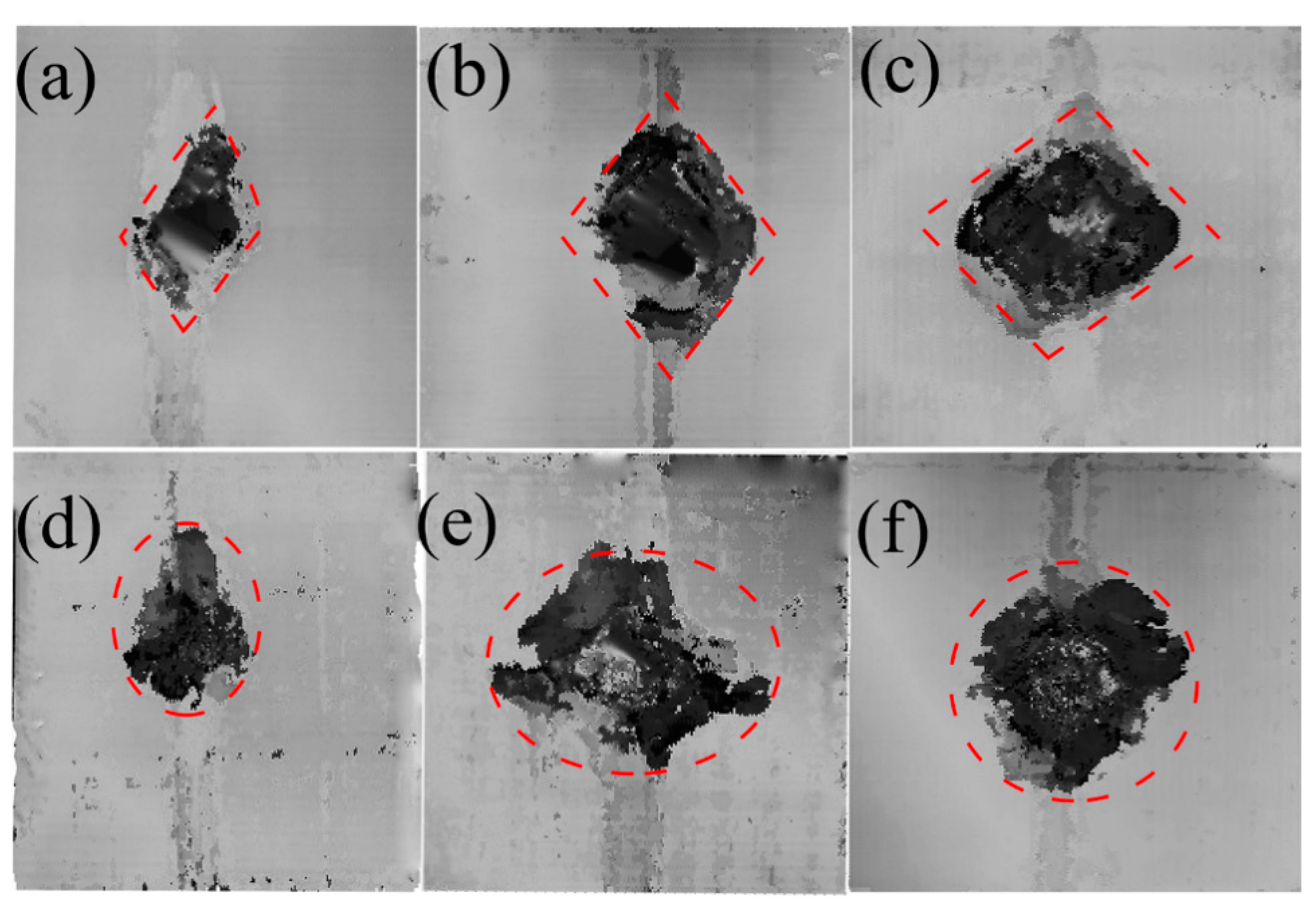

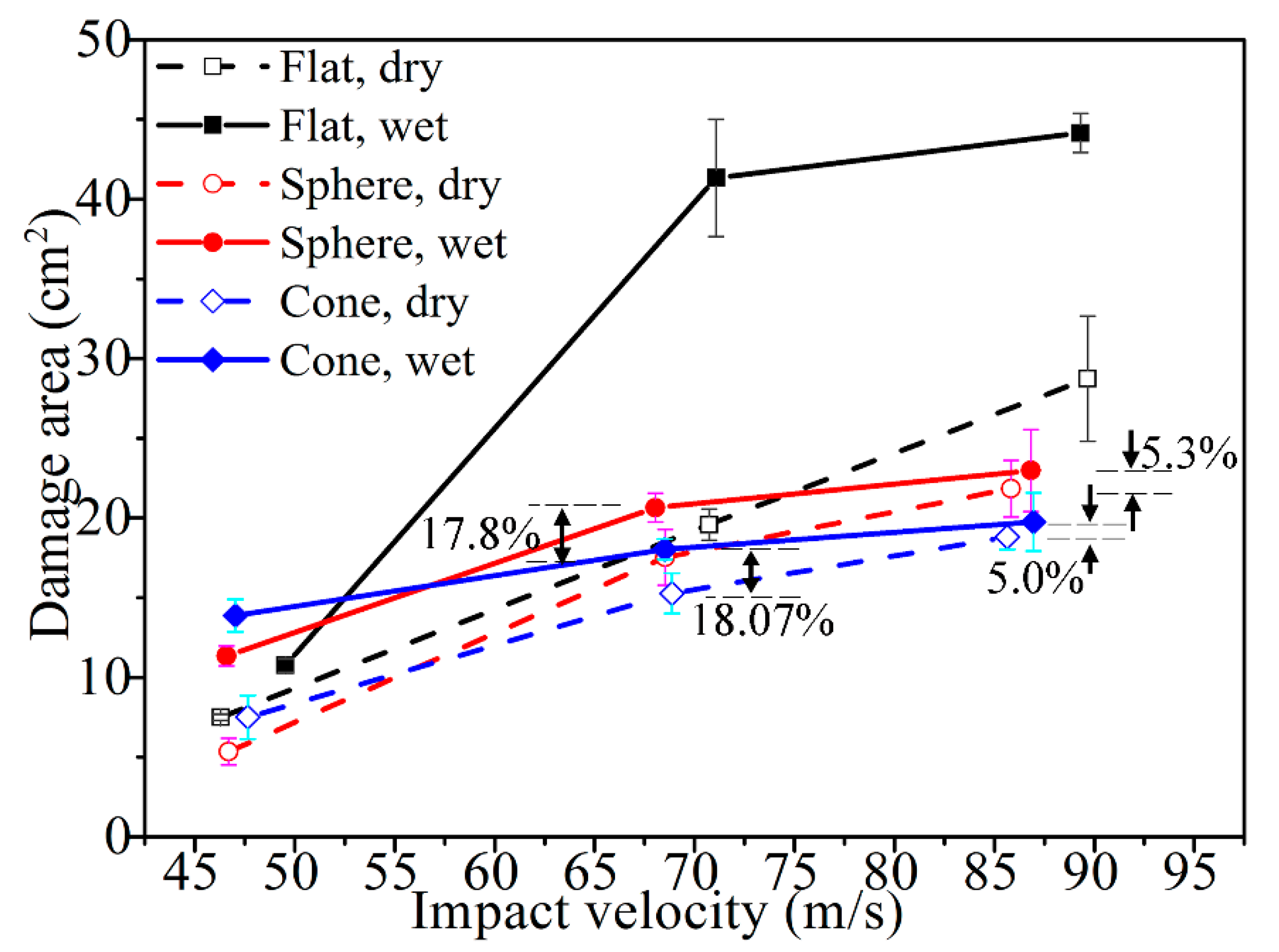
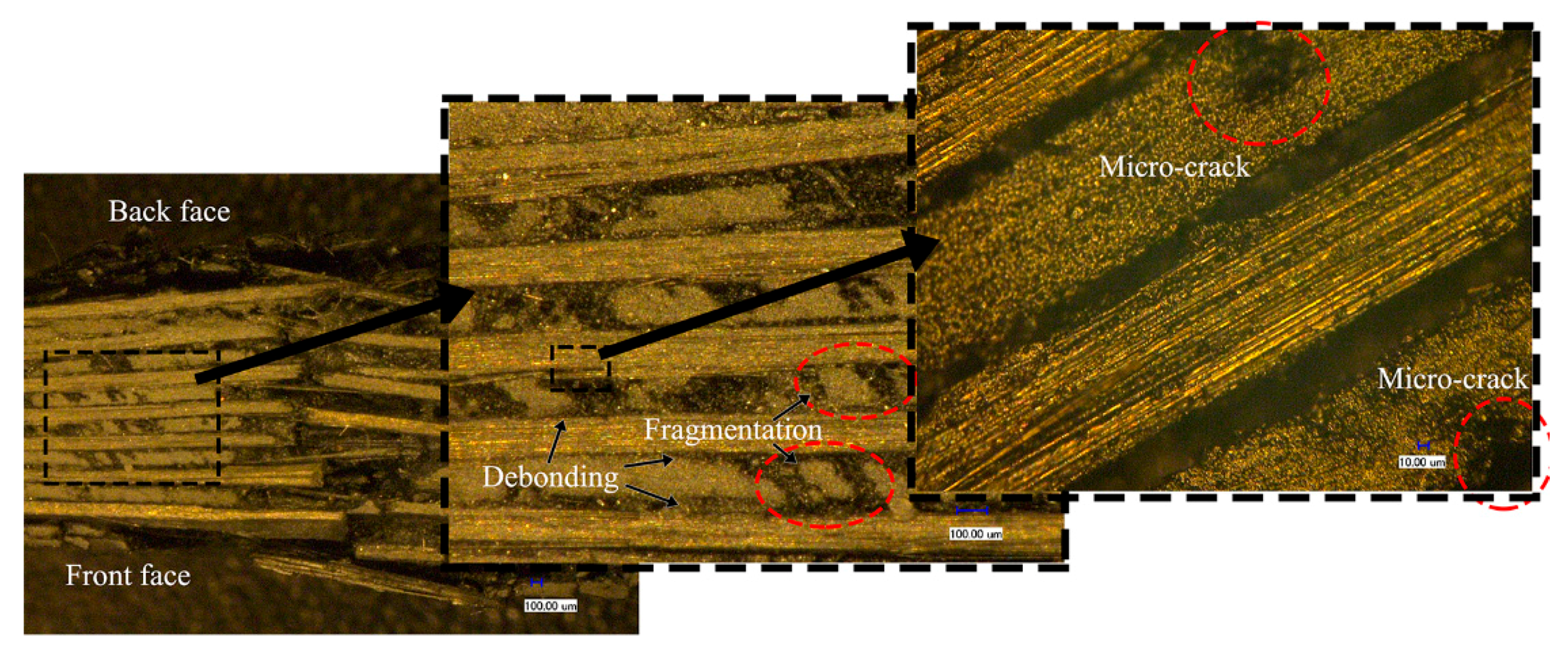
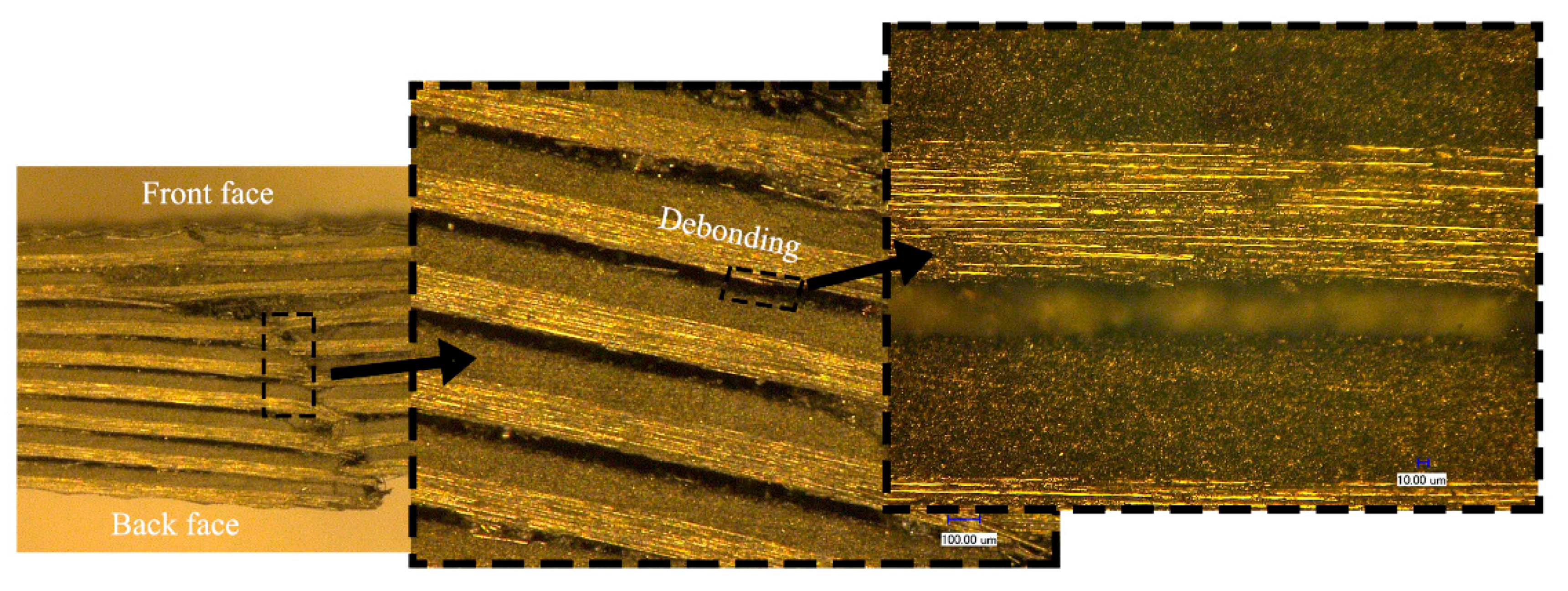
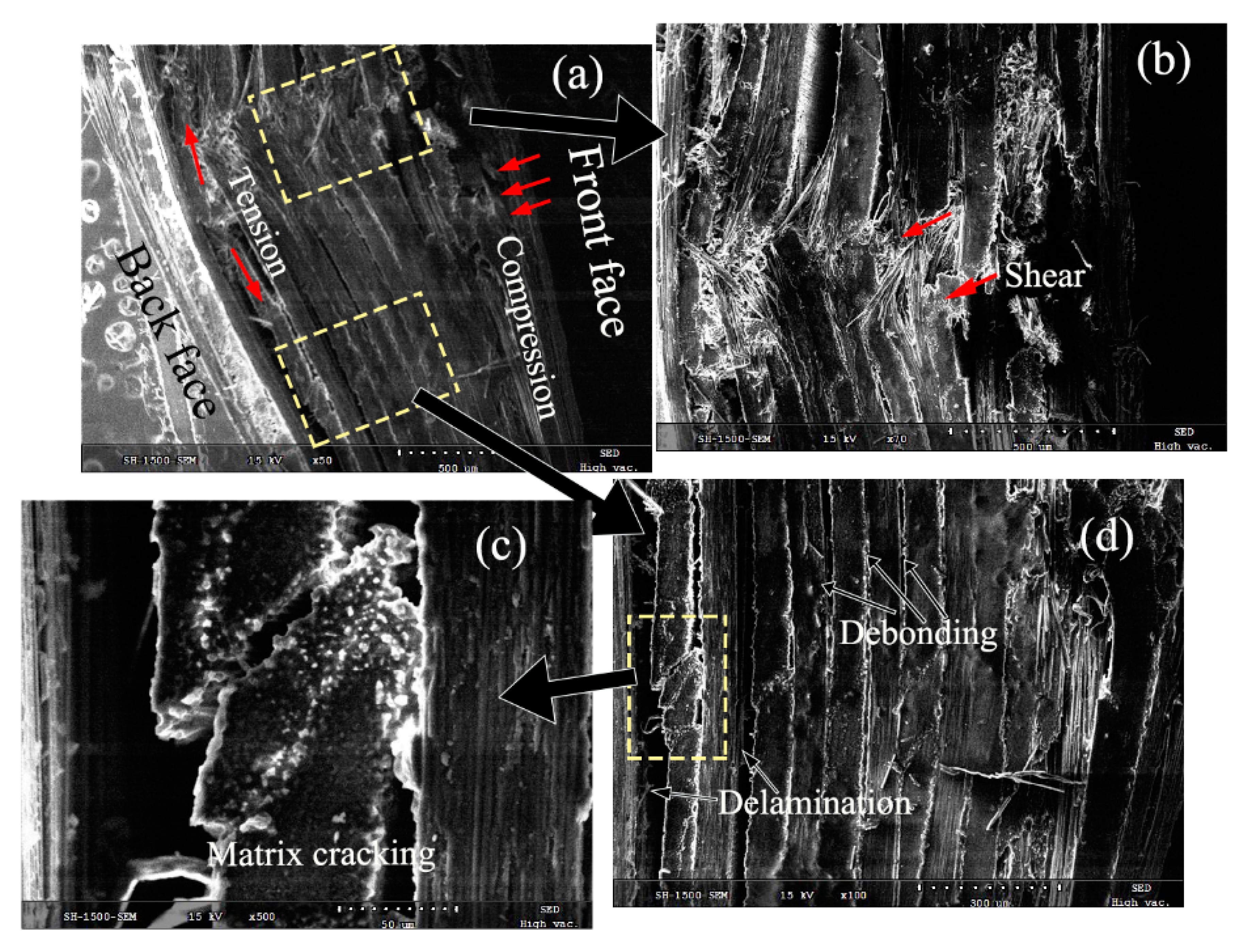
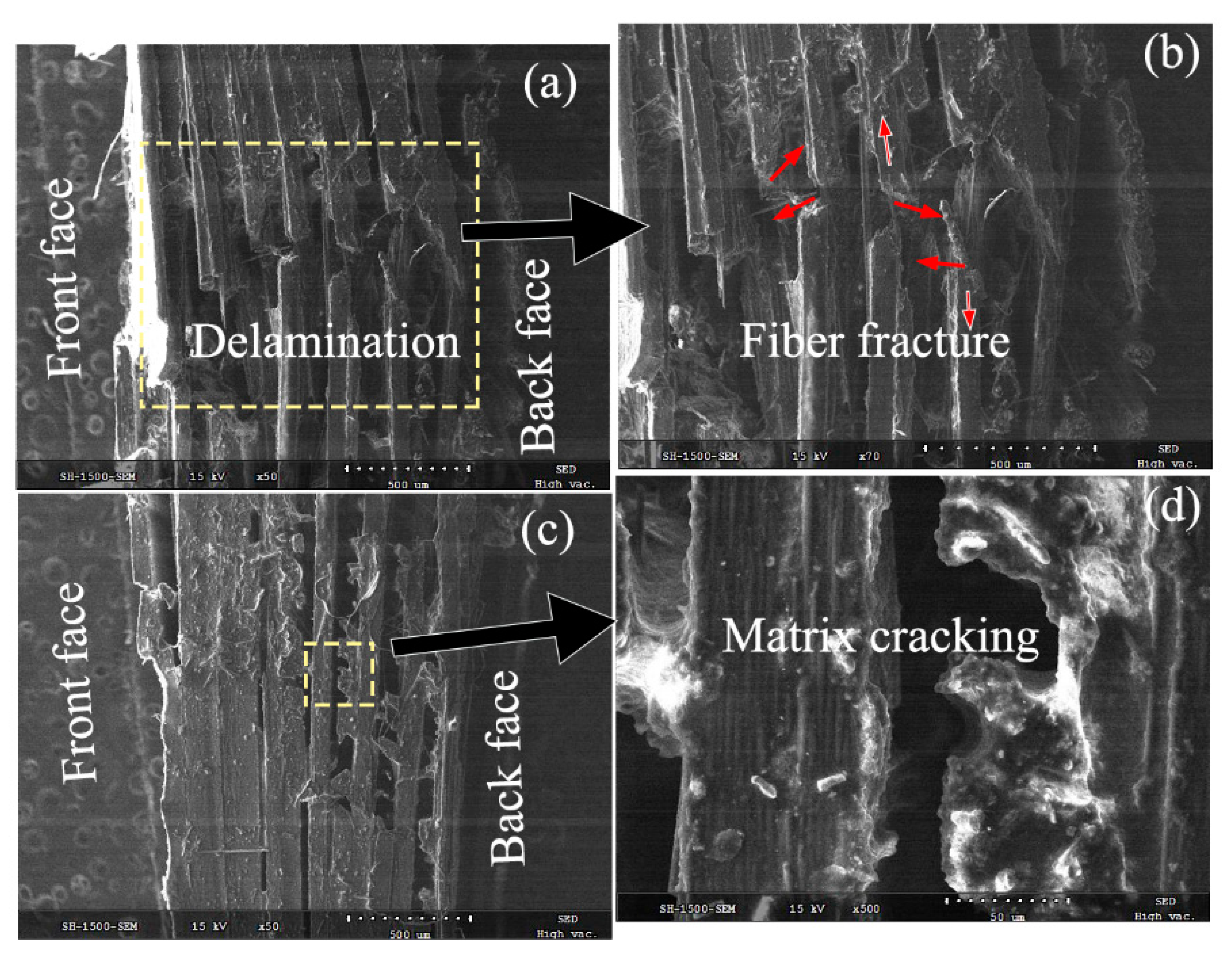
| Case | Impact Velocity (m/s) | Projectile End Shape | Projectile Mass (g) |
|---|---|---|---|
| S2-T-V1 | 45 | Flat | 24.21 |
| S2-T-V2 | 68 | Flat | 24.21 |
| S2-T-V3 | 88 | Flat | 24.21 |
| S3-T-V1 | 45 | Sphere | 24.14 |
| S3-T-V2 | 68 | Sphere | 24.14 |
| S3-T-V3 | 88 | Sphere | 24.14 |
| S1-T-V1 | 45 | Cone | 24.32 |
| S1-T-V2 | 68 | Cone | 24.32 |
| S1-T-V3 | 88 | Cone | 24.32 |
© 2018 by the authors. Licensee MDPI, Basel, Switzerland. This article is an open access article distributed under the terms and conditions of the Creative Commons Attribution (CC BY) license (http://creativecommons.org/licenses/by/4.0/).
Share and Cite
Liu, X.; Gu, W.; Liu, Q.; Lai, X.; Liu, L. Damage of Hygrothermally Conditioned Carbon Epoxy Composites under High-Velocity Impact. Materials 2018, 11, 2525. https://doi.org/10.3390/ma11122525
Liu X, Gu W, Liu Q, Lai X, Liu L. Damage of Hygrothermally Conditioned Carbon Epoxy Composites under High-Velocity Impact. Materials. 2018; 11(12):2525. https://doi.org/10.3390/ma11122525
Chicago/Turabian StyleLiu, Xiang, Weimin Gu, Qiwen Liu, Xin Lai, and Lisheng Liu. 2018. "Damage of Hygrothermally Conditioned Carbon Epoxy Composites under High-Velocity Impact" Materials 11, no. 12: 2525. https://doi.org/10.3390/ma11122525
APA StyleLiu, X., Gu, W., Liu, Q., Lai, X., & Liu, L. (2018). Damage of Hygrothermally Conditioned Carbon Epoxy Composites under High-Velocity Impact. Materials, 11(12), 2525. https://doi.org/10.3390/ma11122525






